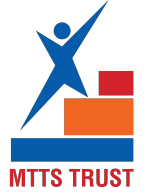Who may attend?
The talk is aimed at the MSc (Mathematics) students.

Organized by MTTS Trust
This is the second talk in the series of lectures to be organized under the title Online Open Mathematics Forum – An initiative of the MTTS Trust.
Dr Tejas Kalelkar, IISER Pune
The lecture will be conducted through Zoom video conference platform. Only 80 requests will be accepted to join the zoom video conference lecture.
Others, who could not get entry in to the zoom meeting may watch it live at YouTube.
Try to login through zoom first using the credentials we give in this page. We will live stream this lecture only if there are more than 80 requests to join the zoom session.
To access the lecture, login to zoom client/application using your zoom username and password and use the following link to join the zoom meeting.
==========
URL to join :
https://us02web.zoom.us/j/83708056191?pwd=eUdPa1lyZ09hbDhCTXoyZVk1Y3BEQT09
Meeting ID: 837 0805 6191
Passcode: 501693
=========
Lecture starts at 4:30 PM. Logins will be permitted during 4:15 PM to 4:30 PM.
(How to join zoom authenticated sessions? See the zoom help here.
In this talk, we will look at the possible geometries (shapes) that can be taken by 2 and 3 dimensional manifolds (spaces). For a long time people assumed that the earth was flat till it was shown that, while it may seem to be locally flat, it globally takes on the shape of a sphere. What are some other “nice” shapes that 2-dimensional spaces can take? Similar questions can be asked for “nice” shapes of our 3-dimensional universe. We will attempt to answer some of these questions and will conclude with an overview of the uniformization theorem for surfaces and Thurston-Perelman’s Geometrisation theorem for 3-dimensional spaces.
Dr Tejas Kalelkar did his PhD from the Indian Statistical Institute and then was a postdoctoral fellow at Washington University in St Louis for three years. He returned and joined IISER Pune as a faculty in 2013. His broad area of research is geometric topology, in particular he works on various aspects of 3-dimensional manifolds.
The talk is aimed at the MSc (Mathematics) students.